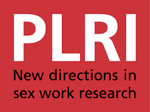Article in AIDS Care, 22: S2, 1629 — 1636.
Structural interventions represent a potentially powerful approach to HIV prevention among female sex workers (FSW) that focus on changing the social context of risk rather than individual behavior. Community-led structural interventions (CLSI) represent a particular form of structural interventions whereby the collective energy of FSW is directed toward action to address the contextual factors that promote their risk. Among these different contextual factors that may be the target of CLSI, are social norms that stigmatize FSW and their work. Drawing from ethnographic data collected as part of an ongoing analysis of the implementation and impact of a CLSI in coastal Andhra Pradesh, India, we present a case study of the challenges and opportunities faced by a CLSI seeking to confront stigmatization of FSW through its interactions with a government-sponsored AIDS education program targeted to the general public. The government program promoted slogans that stigmatized FSW by attributing HIV/AIDS to them. Through participation in the program, the CLSI was complicit in promoting this same stigmatization. Yet it also used participation in the program as an opportunity to raise awareness among FSW of the CLSI and to mobilize FSW. In addition, the CLSI organized an alternative public rally, outside of but parallel to the government program, where they reframed FSW not as the carriers of HIV but as public health workers combating it. With this case study, we suggest that CLSI for HIV prevention among FSW are implemented in a context of inequality that constrains their actions, but they can still employ strategies that have the potential to transform that context. (Abstract authors’ own)
Author:
Kim M. Blankenship; Monica R. Biradavolu; Asima Jenab; Annie George

